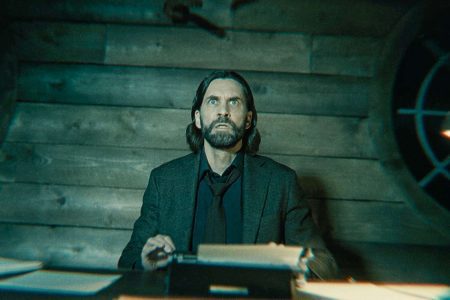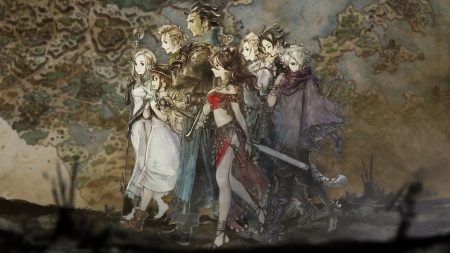Teaching Life Lessons While Being Banned from Schools Worldwide
Fortnite has taken the world by storm. Initially a heavily-inspired take on PlayerUnknown’s Battlegrounds (PUBG), Epic Games’ entry into the battle royale craze has grown tremendously in recent months. With the help of constant map updates, a reasonably priced “Battle Pass,” and a free price tag for those looking to join the fray, Fortnite has officially overtaken PUBG both in terms of popularity and gross earnings. Oh, and by now I’m sure you’re already heard about the Ninja-Drake dream team.
Fortnite strikes me as an interesting beast for several reasons. Its foray into the free-to-play genre, while not unique, is the first major success I’ve seen for a game on consoles. Sure, PC gamers have their staples—League of Legends, Hearthstone, and Team Fortress 2, to name a few. But Fortnite has surpassed them all in terms of both accessibility of skill and accessibility of price. This game is truly free to play—no intrusive microtransactions or gameplay boosters or cooldowns to be found here. Set up an Epic account (supported with cross-play and cross-progression across platforms), and you’re good to go.
In addition to being accessible, the game has a ridiculously high ceiling of play for those looking to master its mechanics. For days following the Drake stream, I’ve had my eyes glued to Twitch and YouTube, watching clips of pros like Ninja and Myth as they effortlessly down their enemies and build forts at breakneck speed.
It’s a technical marvel, watching these Fortnite savants dance around the battlefield amid a flurry of bullets, rockets, and wooden staircases. Not only are their streams entertaining, but I’ve found myself astonished that Epic’s Fortnite is able to handle all the computations, processing, and renderings of hundreds of building blocks on screen at once. It might have seemed like a cheap PUBG knockoff at first glance, but Fortnite is anything but under the hood.
Naturally, I’ve tried my hand at capturing the magic of Fortnite first hand. And naturally, I’ve found that I suck at it. The phrase “they make it look easy” has never rung truer as it has among the Fortnite pros. However, the more I’ve put myself out there, game after game, the more confident I’ve become in my play. And that confidence has manifested itself back in my everyday life in surprising ways.
A Tale of a Fortnite God
When Ninja plays Fortnite, you almost forget the game is a free-for-all. No matter how many enemies he encounters out in Fortnite’s large sprawling map, no matter how frequently he’s ambushed or flanked, he always makes it out unscathed.
Running into an enemy in Fortnite is a big deal, you have to remember. In battle royale-style games, you only have one life. You die, you’re out. The number of kills you’ve racked up or number of players you’ve outlived is meaningless unless you’re the very last one on that island. So when you come face to face with an enemy, you better be prepared to either kill the player or avoid them, lest you want a premature trip back to the lobby screen.
The average player would likely pick the latter strategy, sticking to the edges of the shrinking map and finding cover in bushes and behind trees as bolder players kill each other off. When the dust has settled and the player count dwindles to single digits, perhaps a David is able to topple a Goliath with a lucky shotgun blast or well-timed grenade throw. More often than not, though, the weak are relegated to disappointing top-15 finishes and the receiving end of a double barrel.
Ninja is not your average player. Not content just with winning the royale, Ninja needs to “dominate” the competition, engaging in combat whenever possible and racking up kill counts into the thirties—a third of the people playing! Forget being daring; people like Ninja are straight up nuts.
Take the above fight between Ninja and fellow streamer Daequan, for instance. The second Daequan spots Ninja, the gloves come off. Not once does either party back down in this ridiculous, bombastic display of high-sensitivity shooting and blazing-fast hotkeys. Despite the fact that one stray bullet could mean certain death for either player, they duke it out not as scared, fragile mortals, but as almighty gods.
If only I could be as fortunate.
The Reality of Fortnite
My first few attempts at playing the game went miserably, to say the least. After parachuting to one of several locations, I’d die within a few seconds of hitting the ground. Why? Someone always managed to find a gun before me and put me in my place.
After a while, I began to memorize parts of the map. Shifty Shafts and Anarchy Aches became my best friends as I worked out chest locations and perfected landing near buildings populated with guns and loot.
Soon, I gained enough confidence to survive the early game and trek out into the wilderness with my own little arsenal of guns, shield potions, and medkits. Surely, I would fare better once the players started to decline in number.
I did not.
Time after time again, I’d be high-tailing it from zone to zone, planning my next move, only to be taken out by a lone gunman from a nearby building, or worse, a sniper perched atop a seemingly impenetrable tower of brick and steel.
It was nerve-racking, being shot at out of nowhere with no idea where the gunfire was coming from. I felt like I was back in history class watching Saving Private Ryan, jumping out of my seat every time a soldier took a bullet when storming Normandy. (While I can stomach violence in games and movies, I’m a wuss when it comes to sudden surprises and jump-scares.)
If being shot from afar was nerve-racking, then being shot up close was plain humiliating. I had yet to get a feel for Fortnite’s shooting mechanics, and aiming felt wobbly and imprecise. In my early matches, I gravitated toward the tactical shotgun—it having the biggest bullet spread in the game—in the hopes of blindly killing someone at point-blank range.
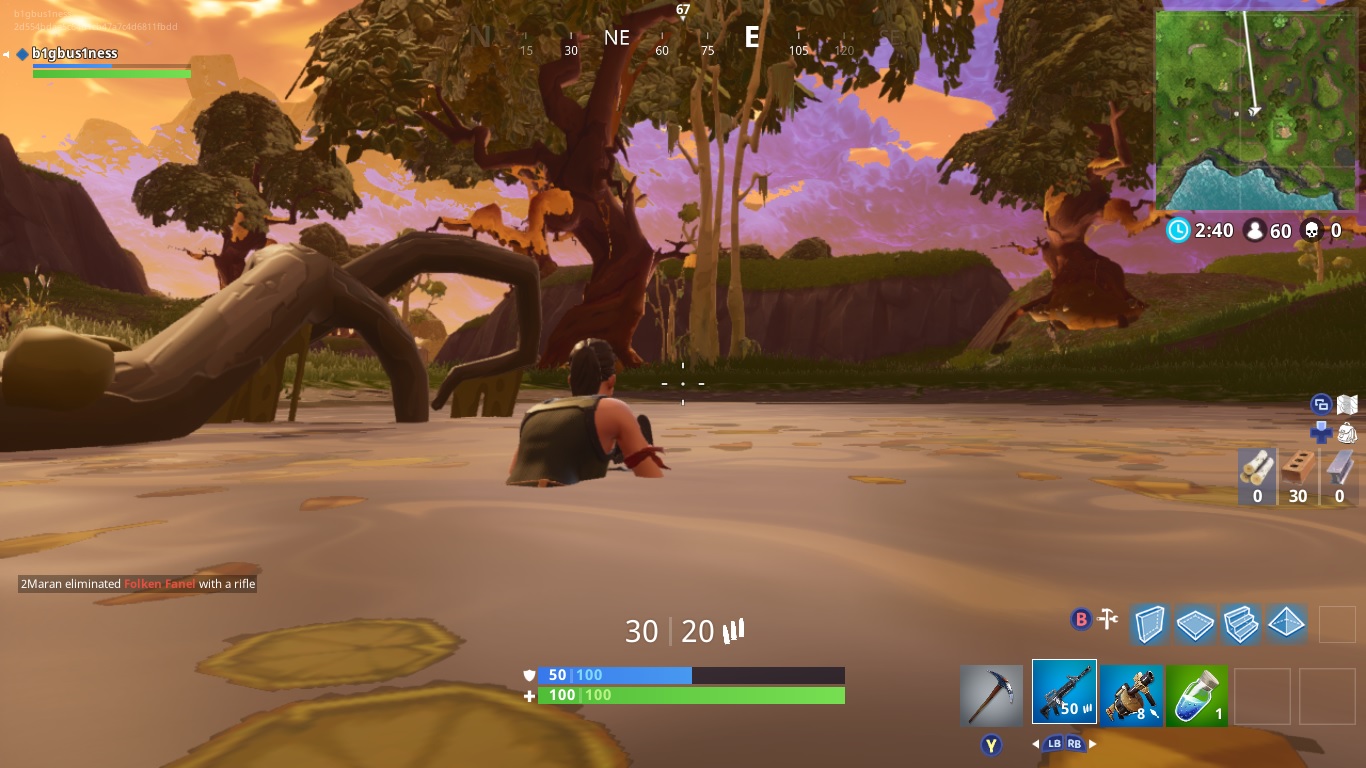
Between the anxiety I felt getting shot at and the shame I felt in getting my derrière handed to me early on, I lost what little confidence I had in my abilities at Fortnite. Add to that a complex building mechanic that, while awesome, I found utterly intimidating, and I realized just how in over my head I was at the time.
I relegated myself to playing from a purely risk-adverse mindset. No shooting bullets unless absolutely necessary. Only sprint when 100% sure no one else is in the vicinity. The kind of play I had resorted to, if I’m being honest with myself, was pitiful. I felt trapped in a box, weak, and vulnerable… just as I often have in life when it’s come to my very real feelings of self-consciousness and social anxiety.
I assured myself that additional play would correct these issues—that I could eke out a win by playing smart and staying dedicated to my playstyle. And yet, scores of matches and tens of hours later, the best I had to show for my efforts was a top-2 finish by pure happenstance. Deep down, I knew I simply wasn’t taking enough risks to succeed.
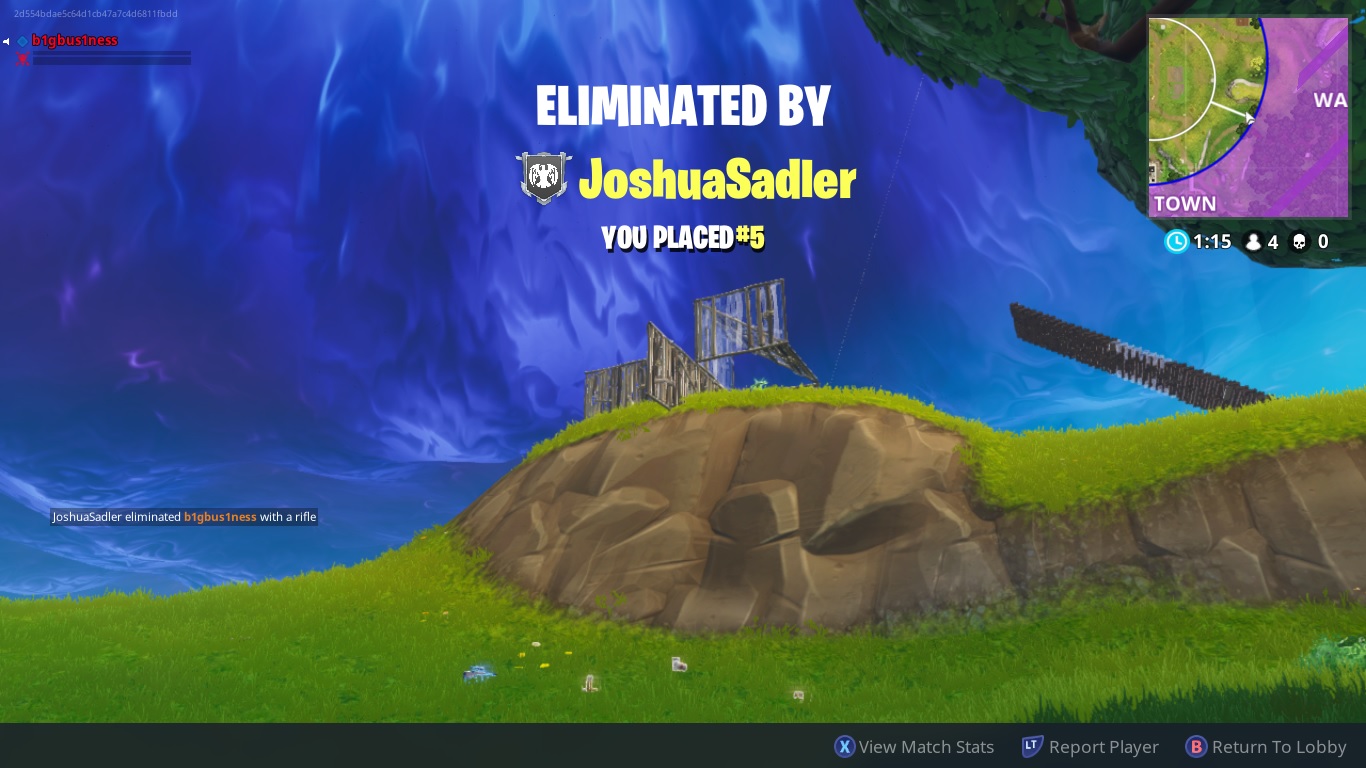
The Tipping Point
While watching one of Ninja’s archived streams, I came across an interesting piece of advice he gave his followers. Though I’m paraphrasing here, the sentiment rings true: Anybody can be as good as me as long as they put in the time and effort to identify their weaknesses and improve on them. And that goes for anything in life, not just Fortnite.
As I listened to Ninja address his fans, I came to the startling realization that he, along with Myth and Daequan, aren’t gods at Fortnite; they’re just very confident players. Yes, it seems like a silly point for me to make, but it’s an invaluable lesson that I thankfully learned early on with my time with Fortnite.
With a new mindset and area of focus, I plunged back into Fortnite with a changed attitude.
Stepping Out from Behind the Tree
As I parachuted back into Fortnite’s map, days later, I had a plan in mind. My shooting was horrible, my confidence was at an all-time low, and I’d barely scratched the surface of gathering resources and building forts to defend myself. Those all had to change if I were to improve at Fortnite.
The improvements were miniscule at first. I had watched numerous tutorials and read countless tips online encouraging players to force themselves into contested areas to get better at shooting. Dropping into Tilted Towers (daring, I know), I found the combatants I so desperately needed to find… only to get out-dueled and out-played again and again.
I changed areas. Anarchy Acres. Tomato Town. Salty Springs. I memorized the layouts of the houses, keeping track of gun locations as I kept a lookout for opposing scavengers to shoot at. My shots had trouble landing. I was clumsy as I hopped around, praying for a lucky hit. I got sent back to the lobby countless times in frustration.
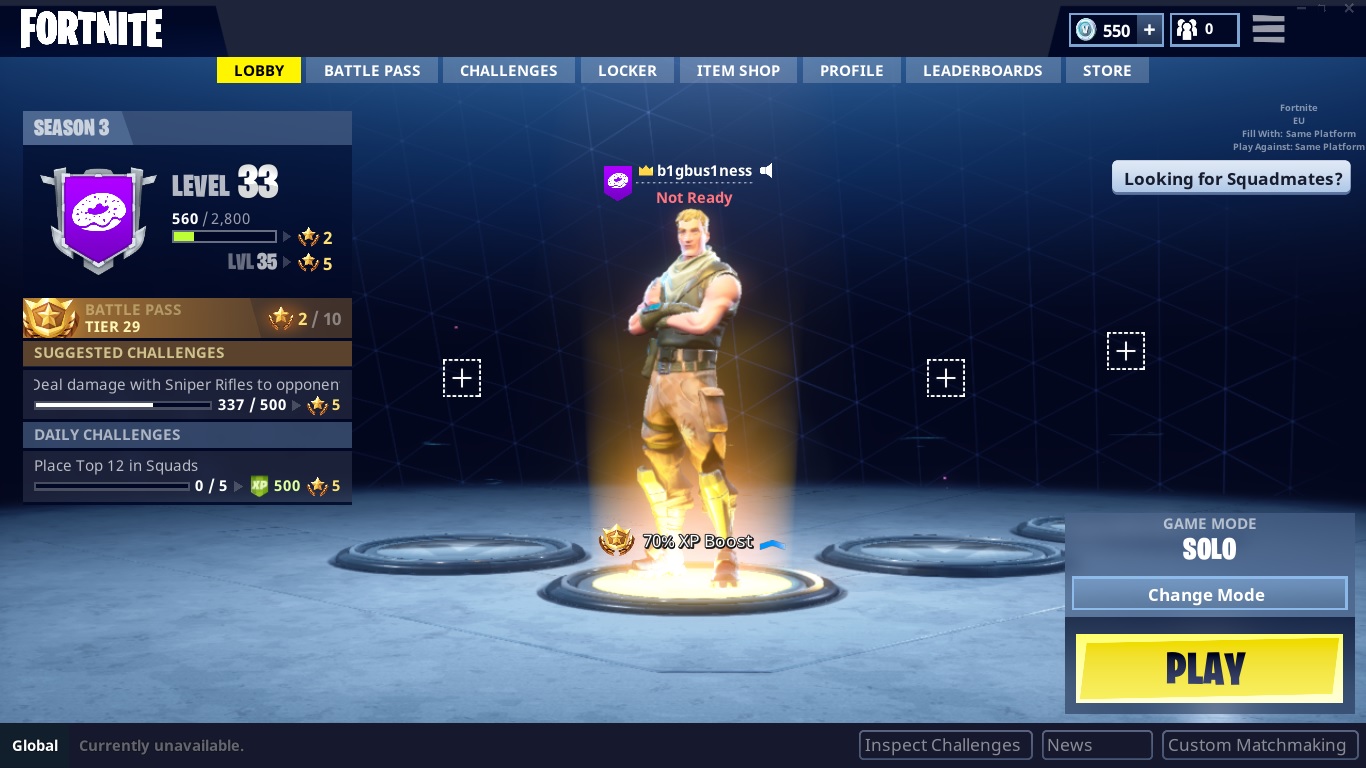
Flustered, I’d sit at the menu screen, fiddling with graphical settings to maximize the game’s draw distance and tweaking the sensitivity of my Xbox One controller (at the time, I was convinced playing with a gamepad on PC was asking for a death sentence). Following more video tutorials, I started practicing aiming and shooting during the pre-battle sequence as the lobby filled up for battle.
I died again. I jumped back in.
I died again. I persisted.
At some point, I had settled back on Shifty Shafts. It was an open area with tons of loot and plenty of space to engage with oncoming enemies. It felt the closest to a traditional Halo or Call of Duty map, so I stuck with it.
I got my first real kill there. Not some lucky “spray-and-pray” nonsense—a solid, well-aimed elimination. As I looted the enemy for an epic Scar and a medkit, adrenaline pumped through me. I felt invincible for the very first time in Fortnite. I felt a taste of what a “god” must feel like.
As it turns out, what I’d felt right there wasn’t invincibility; it was confidence. It wasn’t immortality; it was courage in the face of fear.
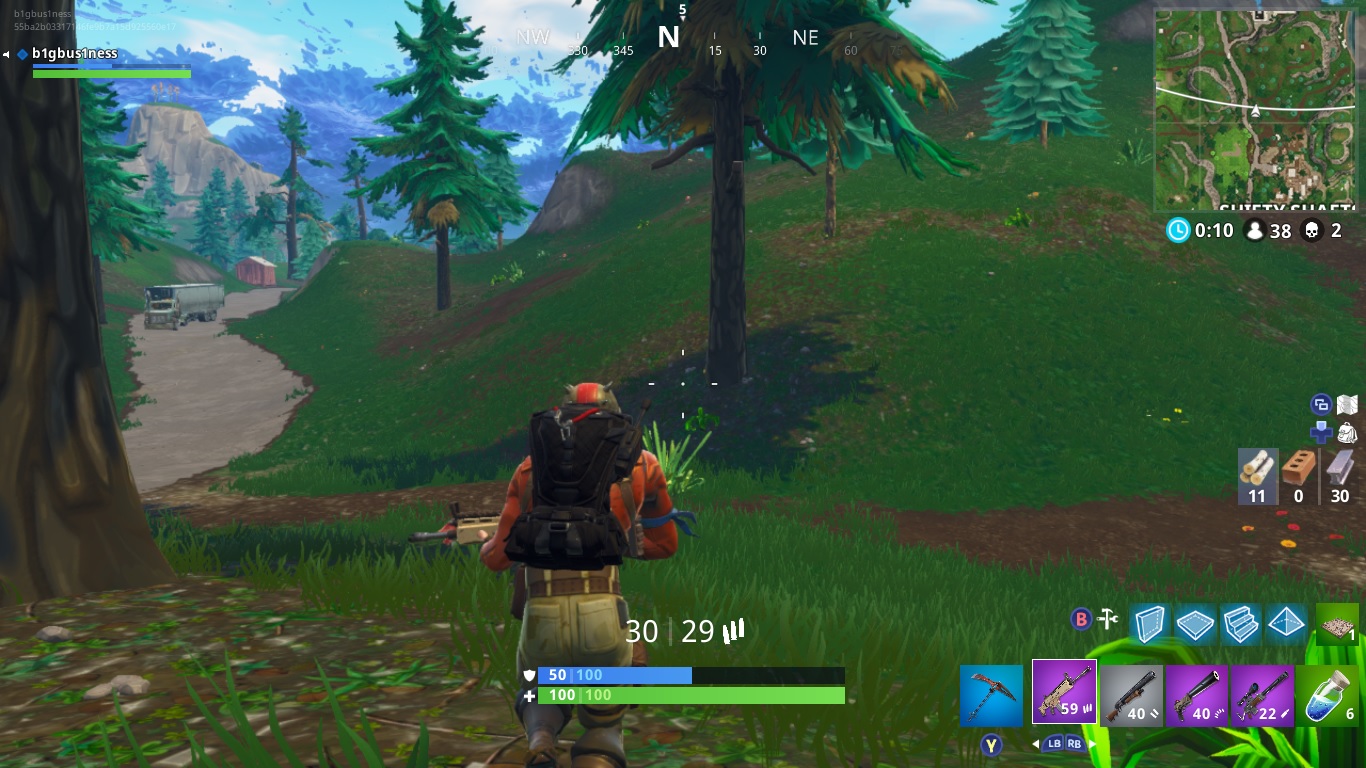
As I played more, I slowly improved. I’d die, I’d respawn, and I’d rack up more kills. I taught myself how to build the bread-and-butter 1×1 fort—four walls with a staircase for added elevation. My aim steadied, and I found a group of guns I was particularly comfortable with: the assault rifle, the silenced submachine gun, and the silenced pistol. I dabbled with bolt-action snipers to get a feel for Fortnite’s bullet leading and gravity. I came to the realization that the pump shotgun, with some precision, puts the tactical shotgun to shame.
In the span of about two weeks, I went from cowering in fear behind a tree to taking on opponents in Fortnite with glee. While I haven’t yet snagged the battle royale #1 win (Update: I won!), I know that I’m closer than ever to attaining that reality. Yet as powerful as these results have been—yes, patience and perseverance do pay off in games like these—what’s even more surprising is the way in which Fortnite has changed my attitude outside of the game itself.

The Takeaway
Building confidence is something that many people, introverted or extroverted, struggle with. People feel that they’re somehow inferior to someone else, or that they shouldn’t try doing something if it means potentially failing. I’m certainly one of those people, and while I won’t go so far as to call Fortnite a complete wake-up call, I can’t ignore that it’s done something no other game I’ve played before has ever done: reward players for stepping out of their comfort zone.
So, next time I’m balling with friends, I’ll take the three-point shot I never before would have attempted. The next time I hesitate to approach someone at a bar, I’ll ask where they’re from. When I want to apply for a job but don’t feel I have all the qualifications, I’ll send the resume over, regardless of my fear of rejection.
Fortnite has forced me to take real risks to accomplish a difficult goal. Like with most important things in life, I’ve found it’s a goal worth fighting for.
David is the founder of The Punished Backlog. He has a problem finishing games he starts.
Just beat: Donkey Kong Bananza.
Working on: Hollow Knight: Silksong.
Can't wait for: Metroid Prime 4: Beyond.
Follow David on Twitter at @David_Silbert to keep up to date with all things The Punished Backlog.


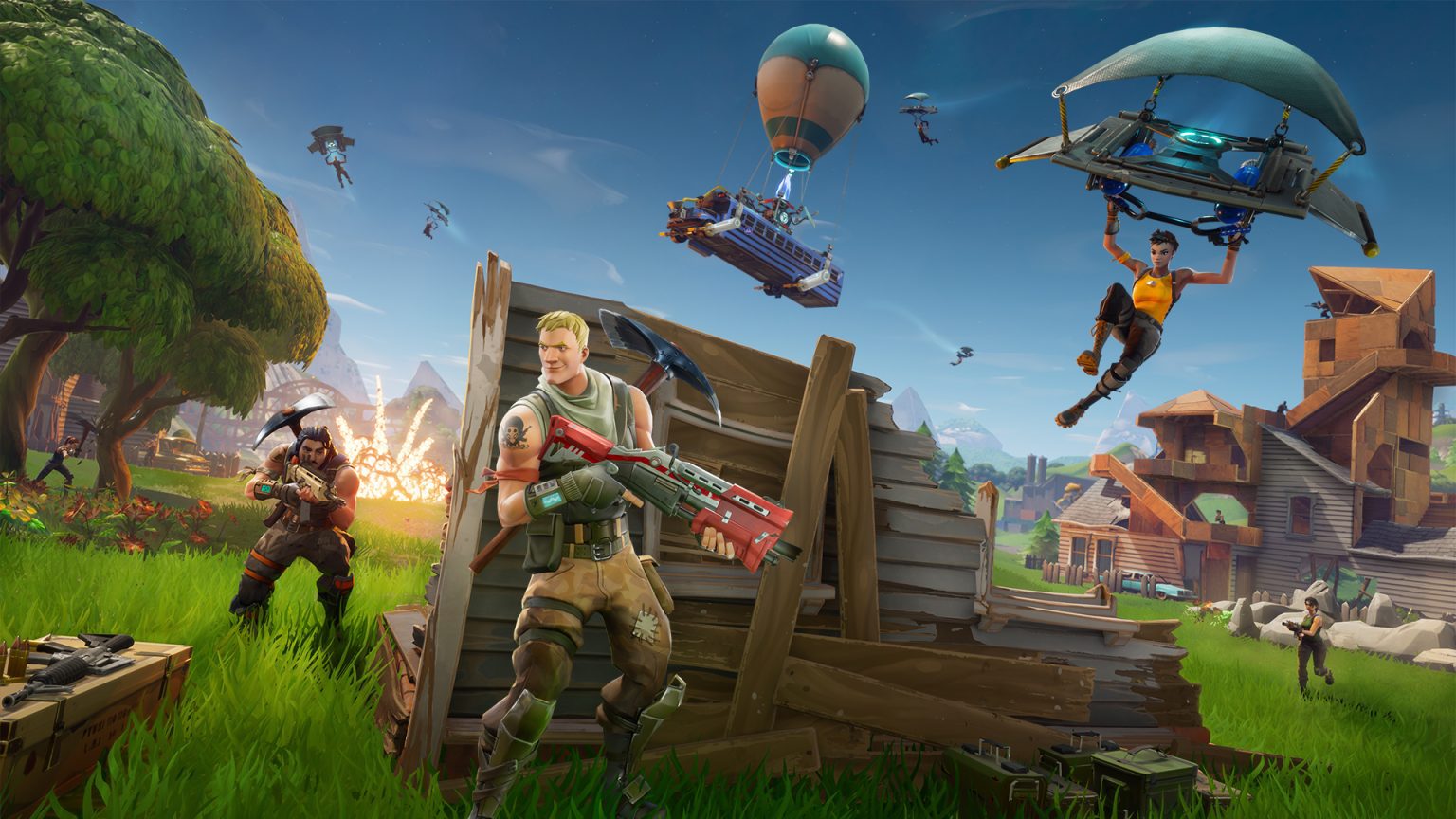


![[ FORTNITE Season 2 ] NINJA vs TSM DAEQUAN - [both pov's]](https://i.ytimg.com/vi/1UueQjKJf1I/hqdefault.jpg)





